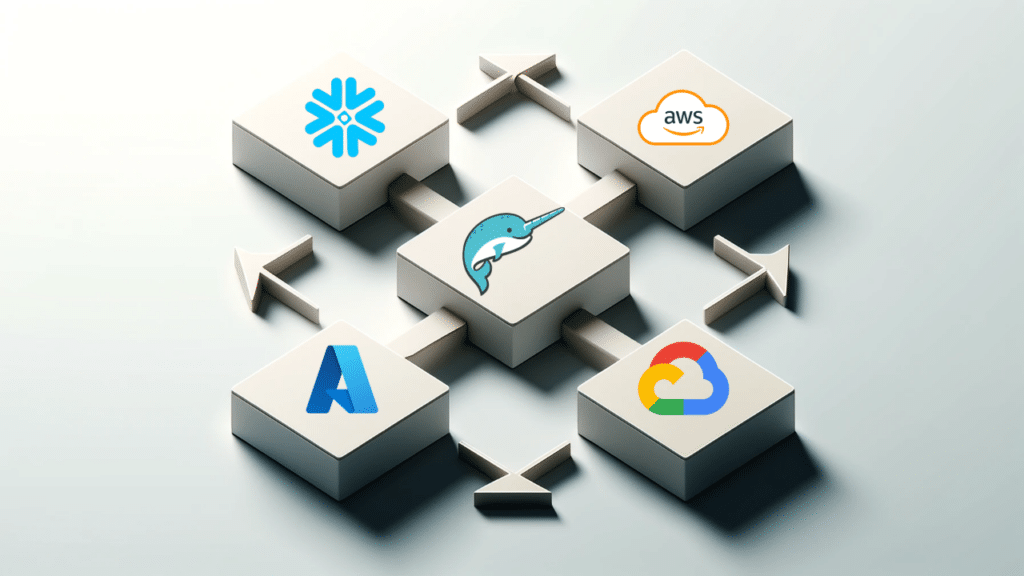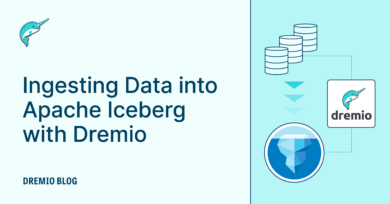6 minute read · May 15, 2024
Unifying Snowflake, Azure, AWS and Google Based Data Marketplaces and Data Sharing with Dremio

· Senior Tech Evangelist, Dremio

Data marketplaces have become invaluable resources for enriching internal data. These platforms offer a wealth of datasets that can enhance analytics and decision-making processes.
However, a significant challenge arises as each marketplace typically requires you to access data from their specific storage solutions. This often necessitates moving data into their systems or transferring their data into your primary storage, leading to complex and costly data movement.
The Dremio Lakehouse platform addresses these challenges by providing a unique layer for querying data in place. This allows you to enrich your internal data with marketplace datasets without the hassle of managing intricate data transfers.
Additionally, Dremio's reflections can significantly reduce egress costs when accessing data across multiple clouds. This article will explore how Dremio simplifies data unification across Snowflake, Azure, AWS, and Google based data marketplaces.
What is Dremio?
Dremio is a data lakehouse platform that provides unified analytics across various data sources. It enables seamless connectivity to databases, data lakes, and data warehouses, creating a single access layer to build semantic layers that define your business metrics and views across datasets.
Dremio boasts a powerful SQL query engine, allowing you to federate queries across all your data sources. Its data reflections are a standout feature, accelerating query performance by providing optimized data access paths. Additionally, Dremio offers comprehensive lakehouse management, integrating an Apache Iceberg catalog with automatic optimization and cleanup. It also includes Git-like capabilities for data, empowering cutting-edge DataOps practices. With these features, Dremio simplifies and enhances managing and analyzing data from multiple sources.
Addressing Egress Fees in Multi-Cloud Unification
While Dremio enables you to connect and unify data from various sources seamlessly, it doesn't immediately eliminate the egress costs and penalties of moving data out of different cloud vendors' networks. This is where Dremio truly shines. By enabling reflections at the flip of a switch on these connected datasets, Dremio creates an Apache Iceberg-based representation of the dataset on your primary data lake. When users query the original data source, Dremio swaps it out and periodically refreshes the reflection to capture data changes. This approach means that queries won't have to move data in and out of multiple cloud providers, thereby preventing egress costs. Additionally, the datasets from different connected platforms remain visible and manageable within Dremio, reducing the complexity of data management across cloud environments.

In conclusion, Dremio offers a powerful solution for unifying data across Snowflake, Azure, AWS, and Google based data marketplaces while mitigating egress costs and simplifying data management. By leveraging Dremio's reflections and advanced lakehouse capabilities, you can enhance your analytics without the hassle of complex data movements. We invite you to get hands-on and explore the full potential of Dremio through the tutorials listed below. Discover how Dremio can transform your data operations and take your analytics to the next level.
Tutorials for Trying Out Dremio (all can be done from locally on your laptop):
- Lakehouse on Your Laptop with Apache Iceberg, Nessie and Dremio
- Experience Dremio: dbt, git for data and more
- From Postgres to Apache Iceberg to BI Dashboard
- From MongoDB to Apache Iceberg to BI Dashboard
- From SQLServer to Apache Iceberg to BI Dashboard
- From MySQL to Apache Iceberg to BI Dashboard
- From Elasticsearch to Apache Iceberg to BI Dashboard
- From Apache Druid to Apache Iceberg to BI Dashboard
- From JSON/CSV/Parquet to Apache to BI Dashboard
- From Kafka to Apache Iceberg to Dremio
Tutorials of Dremio with Cloud Services (AWS, Snowflake, etc.)


